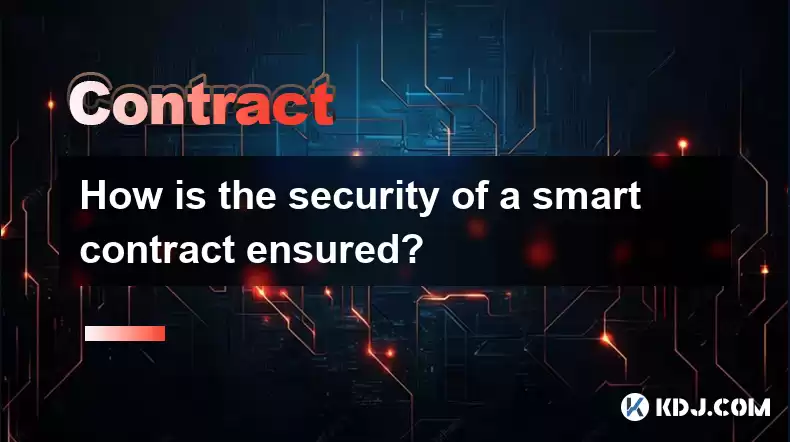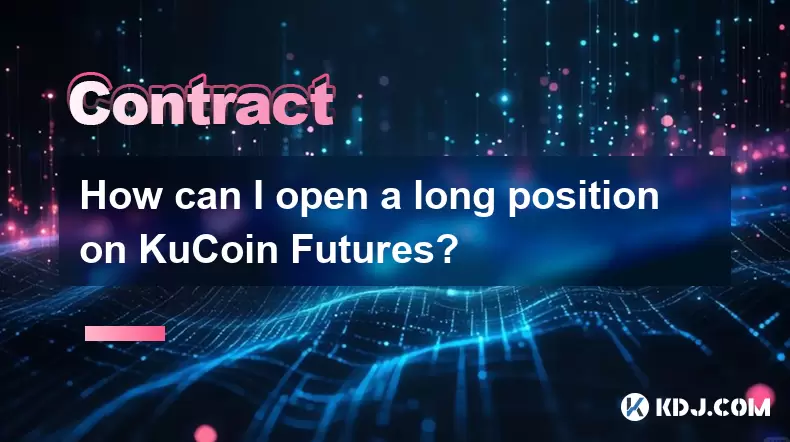-
 Bitcoin
Bitcoin $116700
0.24% -
 Ethereum
Ethereum $3973
4.34% -
 XRP
XRP $3.283
7.68% -
 Tether USDt
Tether USDt $1.000
0.01% -
 BNB
BNB $789.8
2.27% -
 Solana
Solana $176.2
3.31% -
 USDC
USDC $0.9999
0.00% -
 Dogecoin
Dogecoin $0.2238
5.14% -
 TRON
TRON $0.3389
-0.51% -
 Cardano
Cardano $0.7907
4.03% -
 Stellar
Stellar $0.4527
10.02% -
 Hyperliquid
Hyperliquid $41.07
4.27% -
 Sui
Sui $3.794
1.77% -
 Chainlink
Chainlink $19.49
10.40% -
 Bitcoin Cash
Bitcoin Cash $580.9
0.74% -
 Hedera
Hedera $0.2617
4.32% -
 Avalanche
Avalanche $23.41
3.67% -
 Ethena USDe
Ethena USDe $1.001
-0.03% -
 Litecoin
Litecoin $122.4
1.38% -
 Toncoin
Toncoin $3.364
1.49% -
 UNUS SED LEO
UNUS SED LEO $8.988
0.37% -
 Shiba Inu
Shiba Inu $0.00001295
2.82% -
 Uniswap
Uniswap $10.62
5.75% -
 Polkadot
Polkadot $3.922
4.46% -
 Dai
Dai $1.000
0.01% -
 Bitget Token
Bitget Token $4.494
2.15% -
 Monero
Monero $268.0
-1.30% -
 Cronos
Cronos $0.1523
3.68% -
 Pepe
Pepe $0.00001127
4.43% -
 Aave
Aave $285.4
4.85%
How is the security of a smart contract ensured?
Smart contract security necessitates rigorous code auditing, formal verification, secure development practices, post-deployment monitoring, and user due diligence; decentralization alone isn't sufficient.
Mar 24, 2025 at 03:08 am

Key Points:
- Smart contract security relies on a multi-faceted approach, encompassing rigorous code auditing, formal verification, and secure development practices.
- Decentralized nature doesn't automatically equate to security; vulnerabilities in the code can still be exploited.
- The choice of blockchain platform and its security mechanisms play a crucial role in overall smart contract security.
- Post-deployment monitoring and bug bounty programs are essential for identifying and mitigating potential vulnerabilities.
- User awareness and due diligence are crucial in mitigating risks associated with interacting with smart contracts.
How is the Security of a Smart Contract Ensured?
The security of a smart contract is a critical concern within the cryptocurrency ecosystem. It's not a simple "on/off" switch, but rather a complex process involving multiple layers of protection and ongoing vigilance. The decentralized nature of blockchains offers some inherent security, but this doesn't eliminate the need for proactive security measures. Smart contracts, being essentially self-executing contracts with the terms of the agreement between buyer and seller being directly written into lines of code, are only as secure as the code itself.
One of the primary methods of ensuring smart contract security is through rigorous code auditing. Independent security experts meticulously examine the code for vulnerabilities, identifying potential loopholes that malicious actors could exploit. These audits often involve various techniques, from manual code reviews to automated security analysis tools. The goal is to uncover and rectify any flaws before deployment.
Formal verification is another crucial aspect of ensuring smart contract security. This involves mathematically proving that the smart contract code behaves as intended. Unlike traditional audits, which primarily focus on identifying vulnerabilities, formal verification aims to provide a higher level of assurance regarding the code's correctness and reliability. This method is computationally intensive but offers a higher degree of certainty.
Secure development practices are fundamental to creating secure smart contracts. This includes adhering to established security standards and best practices throughout the entire development lifecycle. This involves using secure coding techniques, regularly testing the code for vulnerabilities, and employing version control systems to track changes and facilitate collaboration. Regular updates and patches are also vital.
The choice of blockchain platform is a significant factor influencing the security of a smart contract. Different platforms have different security models and mechanisms. Some platforms offer more robust security features, such as built-in security audits and formal verification tools, while others rely more heavily on community-based security audits. Understanding the security features of the chosen platform is crucial before deploying a smart contract.
Post-deployment monitoring is also essential. Even after a smart contract has been deployed, it's vital to continuously monitor its activity for any unusual or suspicious behavior. This can help identify and mitigate potential vulnerabilities that might have been missed during the development and auditing phases. Tools that track contract activity and provide alerts for anomalous behavior can be valuable in this context.
Bug bounty programs can be a valuable addition to a smart contract's security strategy. These programs incentivize security researchers to identify and report vulnerabilities in the smart contract code. By offering rewards for finding and reporting bugs, organizations can encourage a wider range of security experts to contribute to the overall security of their smart contracts. This proactive approach can significantly reduce the risk of exploitation.
Beyond the technical aspects, user awareness and due diligence play a crucial role in mitigating the risks associated with smart contracts. Users should carefully review the code of any smart contract they intend to interact with. They should also be wary of scams and phishing attempts, as malicious actors often target users who are unfamiliar with smart contract security best practices. Thoroughly understanding the contract's functionality and its implications is critical before interacting with it. This involves reviewing the terms and conditions of the contract, understanding the risks involved, and ensuring the contract aligns with their expectations.
Frequently Asked Questions:
Q: Can a smart contract be completely secure?
A: No smart contract can be guaranteed to be 100% secure. While rigorous auditing and security practices significantly reduce the risk of vulnerabilities, the possibility of unforeseen flaws or novel attack vectors always exists. The complexity of smart contracts and the evolving nature of security threats make complete security an unattainable goal.
Q: What are some common vulnerabilities in smart contracts?
A: Common vulnerabilities include reentrancy attacks (where a contract calls itself recursively to drain funds), arithmetic overflow/underflow errors (leading to unexpected results), and logic errors (resulting in unintended behavior). Access control flaws, where unauthorized users can modify the contract's state, are also prevalent. Denial-of-service attacks can also cripple functionality.
Q: How can I verify the security of a smart contract before interacting with it?
A: Before interacting with a smart contract, check for publicly available audit reports from reputable security firms. Examine the code yourself if you have the technical expertise. Look for community discussions and reviews. Be cautious of contracts with little to no transparency or security review. Consider the reputation and track record of the developers.
Q: What is the role of insurance in smart contract security?
A: Smart contract insurance is emerging as a way to mitigate financial losses from smart contract exploits or failures. These policies can provide coverage for losses resulting from vulnerabilities or unforeseen events. However, it's crucial to understand the terms and conditions of any such insurance policy. Not all risks are covered, and the availability of insurance can vary depending on the platform and contract.
Q: How does the immutability of blockchain affect smart contract security?
A: The immutability of blockchain means that once a smart contract is deployed, its code cannot be easily altered. While this prevents malicious actors from directly modifying the contract's logic, it also means that vulnerabilities discovered after deployment are difficult to fix. This highlights the importance of thorough auditing and testing before deployment. Mitigation strategies might include deploying a new, corrected version of the contract, rather than modifying the original.
Disclaimer:info@kdj.com
The information provided is not trading advice. kdj.com does not assume any responsibility for any investments made based on the information provided in this article. Cryptocurrencies are highly volatile and it is highly recommended that you invest with caution after thorough research!
If you believe that the content used on this website infringes your copyright, please contact us immediately (info@kdj.com) and we will delete it promptly.
- Coinbase, Cosmos, and dYdX: Navigating the Crypto Currents
- 2025-08-09 06:30:16
- BNB Price, Altcoins, and Predictions: What's the Buzz?
- 2025-08-09 06:30:16
- Crypto Presale Projects Primed for Gains in 2025: A New Yorker's Take
- 2025-08-09 06:50:15
- Ruvi AI: The Millionaire Maker Poised for a Price Spike?
- 2025-08-09 06:50:15
- Cold Wallet, CoinMarketCap, Cardano & XRP: Navigating Crypto's Next Big Wave
- 2025-08-09 07:10:15
- Hedera (HBAR) Price Surge: Market Cap Soars, What's Next?
- 2025-08-09 07:10:15
Related knowledge

What is the difference between realized and unrealized PNL on KuCoin?
Aug 09,2025 at 01:49am
Understanding Realized and Unrealized PNL on KuCoinWhen trading on KuCoin, especially in futures and perpetual contracts, understanding the distinctio...

How does KuCoin Futures compare against Binance Futures in terms of features?
Aug 09,2025 at 03:22am
Trading Interface and User ExperienceThe trading interface is a critical component when comparing KuCoin Futures and Binance Futures, as it directly i...

What is the distinction between mark price and last price on KuCoin?
Aug 08,2025 at 01:58pm
Understanding the Basics of Price in Cryptocurrency TradingIn cryptocurrency exchanges like KuCoin, two key price indicators frequently appear on trad...

What are the specific maker and taker fees on KuCoin Futures?
Aug 08,2025 at 08:28am
Understanding Maker and Taker Fees on KuCoin FuturesWhen trading on KuCoin Futures, users encounter two primary types of fees: maker fees and taker fe...

Can you explain the difference between cross margin and isolated margin on KuCoin?
Aug 09,2025 at 02:57am
Understanding Margin Trading on KuCoinMargin trading on KuCoin allows traders to borrow funds to increase their trading position beyond their actual c...

How can I open a long position on KuCoin Futures?
Aug 09,2025 at 02:07am
Understanding KuCoin Futures and Long PositionsOpening a long position on KuCoin Futures means you are speculating that the price of a cryptocurrency ...

What is the difference between realized and unrealized PNL on KuCoin?
Aug 09,2025 at 01:49am
Understanding Realized and Unrealized PNL on KuCoinWhen trading on KuCoin, especially in futures and perpetual contracts, understanding the distinctio...

How does KuCoin Futures compare against Binance Futures in terms of features?
Aug 09,2025 at 03:22am
Trading Interface and User ExperienceThe trading interface is a critical component when comparing KuCoin Futures and Binance Futures, as it directly i...

What is the distinction between mark price and last price on KuCoin?
Aug 08,2025 at 01:58pm
Understanding the Basics of Price in Cryptocurrency TradingIn cryptocurrency exchanges like KuCoin, two key price indicators frequently appear on trad...

What are the specific maker and taker fees on KuCoin Futures?
Aug 08,2025 at 08:28am
Understanding Maker and Taker Fees on KuCoin FuturesWhen trading on KuCoin Futures, users encounter two primary types of fees: maker fees and taker fe...

Can you explain the difference between cross margin and isolated margin on KuCoin?
Aug 09,2025 at 02:57am
Understanding Margin Trading on KuCoinMargin trading on KuCoin allows traders to borrow funds to increase their trading position beyond their actual c...

How can I open a long position on KuCoin Futures?
Aug 09,2025 at 02:07am
Understanding KuCoin Futures and Long PositionsOpening a long position on KuCoin Futures means you are speculating that the price of a cryptocurrency ...
See all articles

























































































